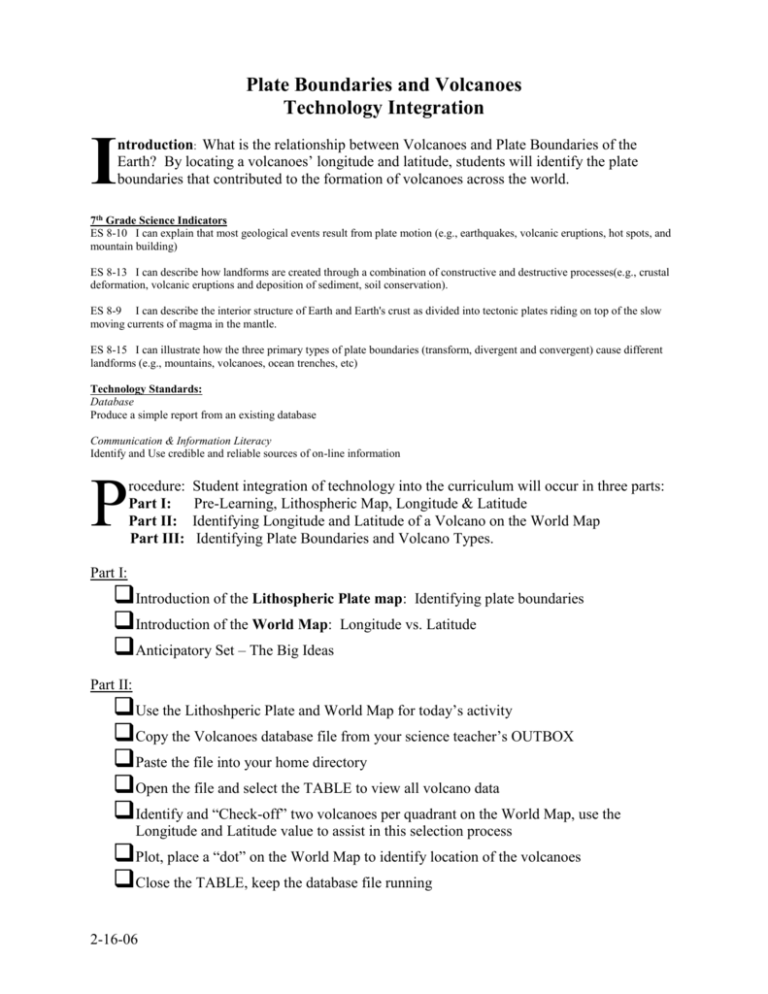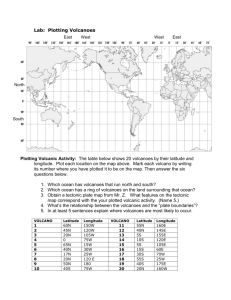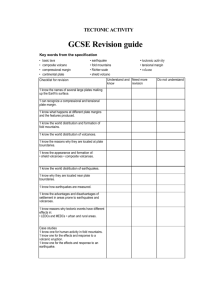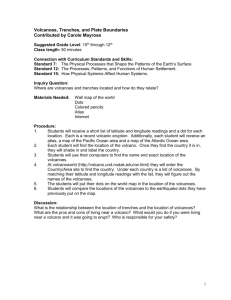ES 8-10 - Solon City Schools
advertisement

Plate Boundaries and Volcanoes Technology Integration I ntroduction: What is the relationship between Volcanoes and Plate Boundaries of the Earth? By locating a volcanoes’ longitude and latitude, students will identify the plate boundaries that contributed to the formation of volcanoes across the world. 7th Grade Science Indicators ES 8-10 I can explain that most geological events result from plate motion (e.g., earthquakes, volcanic eruptions, hot spots, and mountain building) ES 8-13 I can describe how landforms are created through a combination of constructive and destructive processes(e.g., crustal deformation, volcanic eruptions and deposition of sediment, soil conservation). ES 8-9 I can describe the interior structure of Earth and Earth's crust as divided into tectonic plates riding on top of the slow moving currents of magma in the mantle. ES 8-15 I can illustrate how the three primary types of plate boundaries (transform, divergent and convergent) cause different landforms (e.g., mountains, volcanoes, ocean trenches, etc) Technology Standards: Database Produce a simple report from an existing database Communication & Information Literacy Identify and Use credible and reliable sources of on-line information P rocedure: Part I: Part II: Part III: Student integration of technology into the curriculum will occur in three parts: Pre-Learning, Lithospheric Map, Longitude & Latitude Identifying Longitude and Latitude of a Volcano on the World Map Identifying Plate Boundaries and Volcano Types. Part I: Introduction of the Lithospheric Plate map: Identifying plate boundaries Introduction of the World Map: Longitude vs. Latitude Anticipatory Set – The Big Ideas Part II: Use the Lithoshperic Plate and World Map for today’s activity Copy the Volcanoes database file from your science teacher’s OUTBOX Paste the file into your home directory Open the file and select the TABLE to view all volcano data Identify and “Check-off” two volcanoes per quadrant on the World Map, use the Longitude and Latitude value to assist in this selection process Plot, place a “dot” on the World Map to identify location of the volcanoes Close the TABLE, keep the database file running 2-16-06 Part II: Open the FORM Use the Earth’s Lithospheric Plates handout to identify the two plates that converge near the specific volcano Connect to the website, Smithsonian List of Volcanoes http://www.hrw.com/science/siscience/earth/tectonics/volcano/volcano/, to identify the type of volcano Once all 8 volcanoes, records, have been completed, close the FORM, keep the database file open Open the report Check the report and make sure two volcanoes are listed with completed data, per quadrant Check the report consists of one page Print Place name on printout Hand-in Close out of the software Log-off the network 2-16-06







